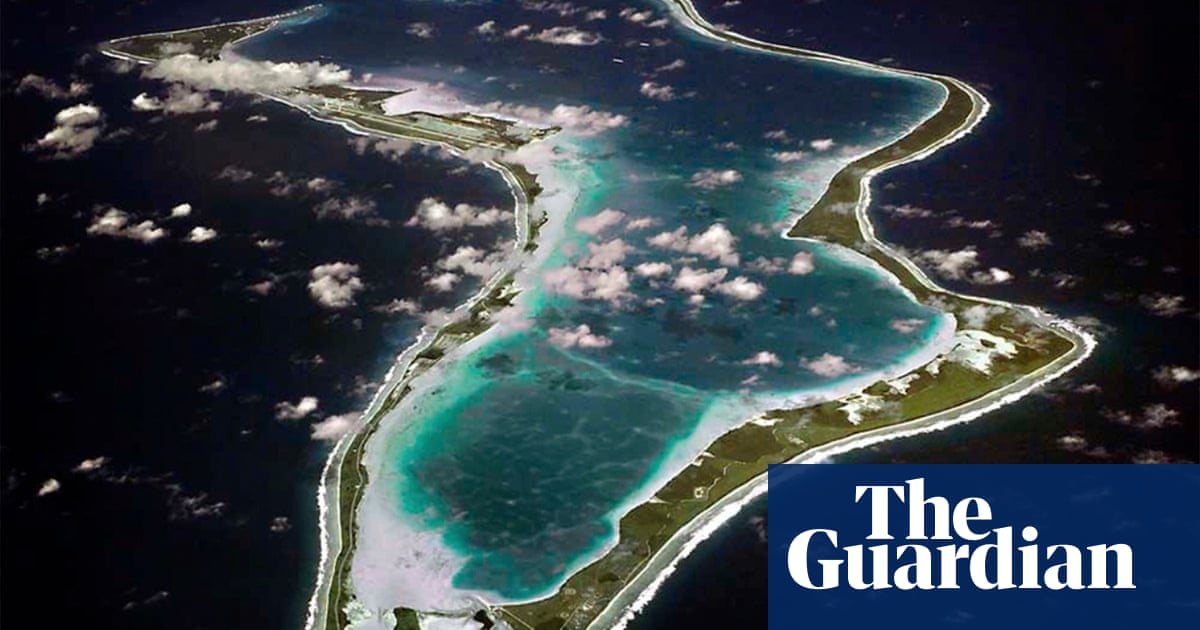At the end of Splash!, the Design Museum’s new exhibition on “a century of swimming and style”, there’s a film about the haenyeo – women on the South Korean island of Jeju who for centuries have been diving for seafood and seaweed at depths up to 20 metres, holding their breath for up to three minutes, in almost all temperatures. It is seen through the eyes of a diver who has decided to follow her mother into this arduous and dangerous work because, she says, “if you dive you don’t feel depressed… There’s no time to overthink everything.”
It’s an arresting 11 minutes of footage, giving a powerful sense of what is to be in water, the more so because it follows a jaunty parade of folly and fun, as well as some courage and some creepiness. The show is curated by Amber Butchart, the dress and design historian, who was raised in the Suffolk coastal town of Lowestoft and now lives in Margate, and who is best known for her appearances on BBC One’s The Great British Sewing Bee, along with Tiya Dahyabhai of the Design Museum. Splash! aims to explore “swimming’s role in modern life” from the 1920s, when beach holidays and their associated outfits became more about active swimming than about passive bathing, to the present day.

It’s a big subject that can and does include a wide range of themes and exhibits. A poster by David Hockney uses his love of water pool patterns to promote the 1984 Los Angeles Olympics. There’s a model of the swoopy roofed Aquatics Centre that Zaha Hadid designed for the 2012 London Games; also a pair of diver Tom Daley’s trunks and a jumper from the range he started producing after taking up knitting to relieve stress. A section on the design of lidos focuses on the triangular Jubilee Pool in Penzance, built in the 1930s and triumphantly brought back from dereliction and storm damage by a community-led effort.
Butchart and her team want to explore the cultural and social aspects of swimming, including their dark sides, so they touch on the exclusion of Jews from swimming spots by the Nazis, and of Black Americans by segregation. There are copies of The Young Physique magazine from 1961 and 1962 – wonderfully blatant examples of gay soft porn masquerading as features about swimwear at a time when homosexuality was illegal. The exhibition talks about the links between sport and entertainment, such that the Olympic champion Johnny Weissmuller could become the star of the Tarzan movies.

There’s a pause for reflection on the bizarre psychology behind the naming of the bikini in 1946 by French fashion designer Louis Réard, after the Pacific island that was forcibly depopulated and then devastated by a nuclear bomb test. There is also the less famous Atome two-piece designed by Jacques Heim, also French, in the same year, a matter of months after the destruction of Hiroshima and Nagasaki. The idea, says Butchart, was that it would be small like an atom but explosive in impact. “It now seems incredibly bad taste,” she says.
It’s a show that is pleasingly unafraid to be thought woke. It includes designs for non-binary and disabled people; swimwear for anyone with unilateral mastectomy; and a one-piece by the Indigenous Australian designer Liandra Gaykamangu, inspired by her cultures and by “the natural world”. The exhibition plinths are made of recycled and recyclable materials. Another film, Beyond the Blue, describes the efforts of an inner-city club, Swim Dem Crew, to overcome the low rates of involvement in swimming by people of colour.

Most of all there’s swimwear, displayed on mannequins and in cases around the exhibition. An unglamorous item in black and grey, with Margate Corporation emblazoned across its chest, baggy to suit different sizes, turns out to be a rental swimming costume from the 1920s. A section describes the evolution of Speedo briefs from the 1960s to the present. There’s a red one-piece, possibly overhyped in the Design Museum’s advance publicity, worn by Pamela Anderson in Baywatch.
So the show is an engaging array of things to do with swimming, with revelations and surprises. It’s presented with a bright and seasidey installation in blue and orange by ScottWhitbyStudio, the architecture firm that led the restoration of the Penzance pool, thematically divided into three locations of swimming – the indoor pool, lido and nature. The exhibition doesn’t entirely overcome the pitfalls that go with such a broad sweep, which is that its exploration of some of the many big subjects it takes on can be (forgive me) shallow.

And with due allowance for the fact that your architecture critic is not really the target audience for a show about briefs and bikinis, I’m not sure that they make the most compelling exhibits. Much swimwear, being designed to expose much of its wearer’s body, can look paltry on its own. For these reasons, the most appealing items of clothing are those not directly designed for swimming but associated with it, such as a pair of silk beach pyjamas from the 1930s, with a bold deco pattern of red-edged black discs on white.
It would have been good to see more pieces such as the show’s first exhibit – a big, bold poster for the London and North Eastern Railway from the 1920s, which, with colours worthy of Matisse, sells the east coast as “the drier side of Britain”. Or a fuller exploration of the world’s many beautiful lidos and tidal pools. You want to be immersed in the subject, which is why the deep dive of the Korean film is such a welcome ending.

.png) 2 days ago
6
2 days ago
6













































